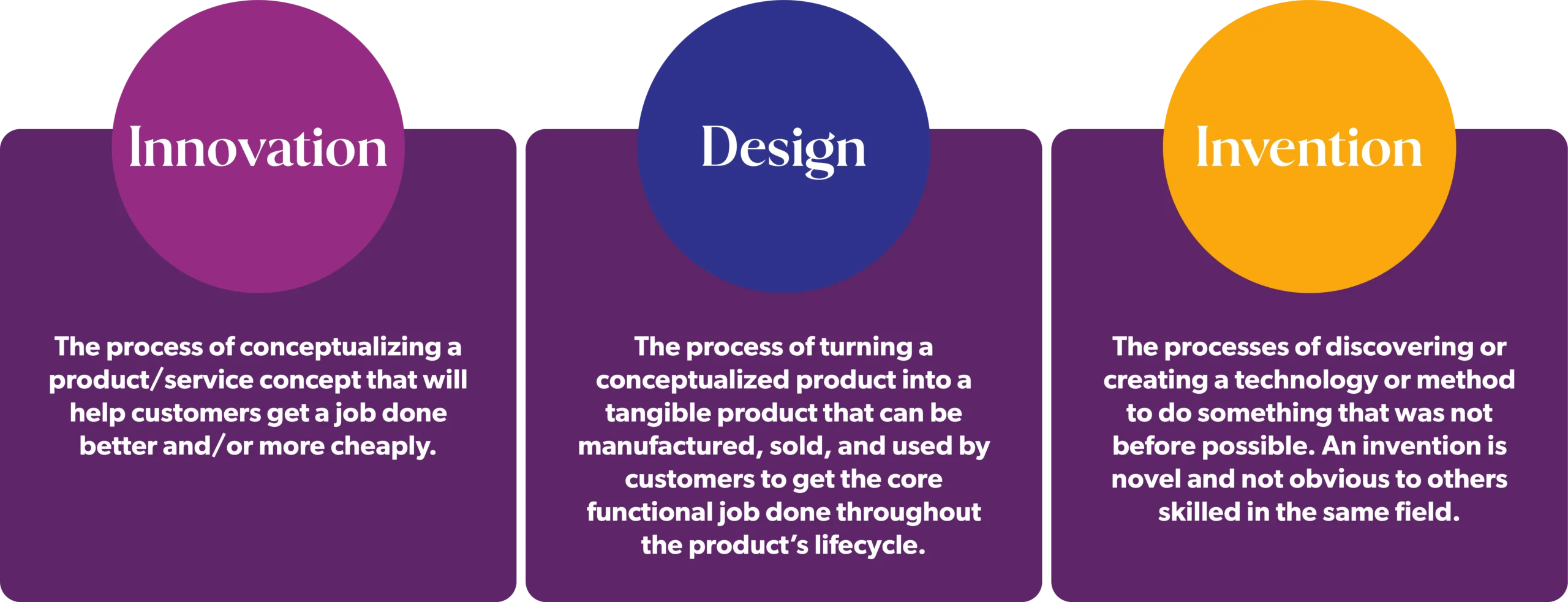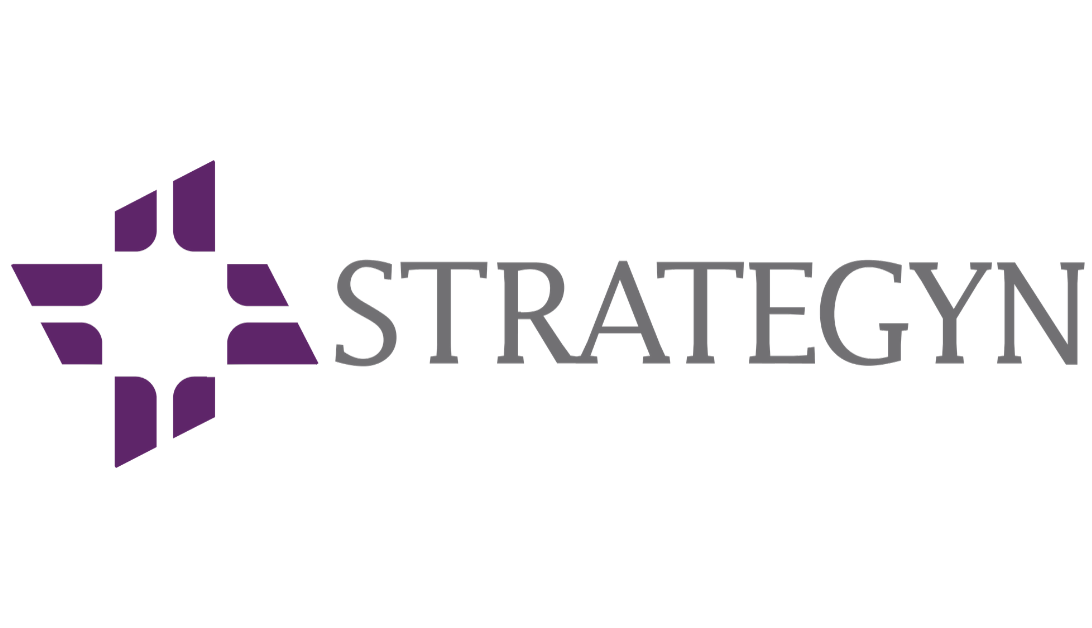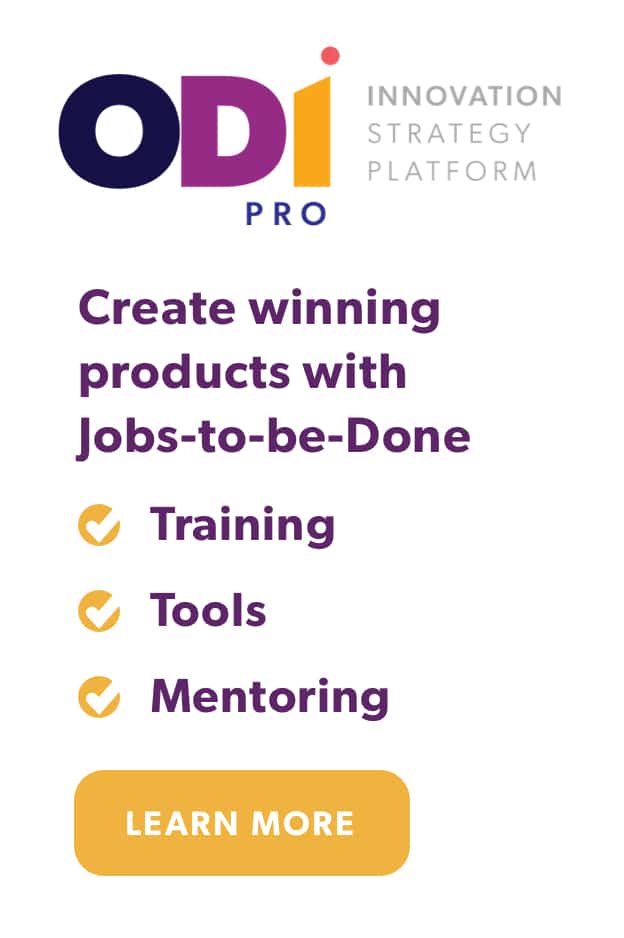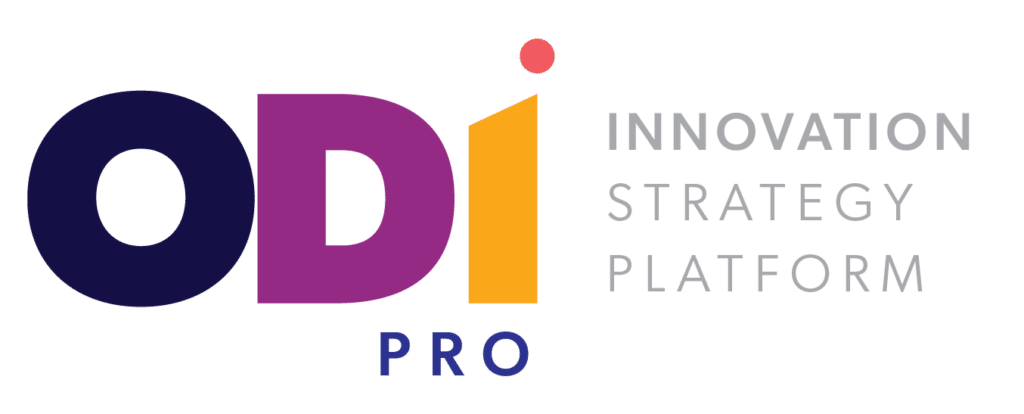A deep understanding of these three disciplines — and who’s responsible for each — is fundamental to achieving predictable growth.
Who in your company is responsible for innovation? Everybody? Not really. When it comes to creating winning products and services, three company functions are responsible for success: (1) the product planning and strategy team, (2) the development team, and (3) R&D — those who decide what technologies to invest in for the future.
Each function has a different responsibility, yet their roles are often blurred, leading people to think that innovation, design and invention are all one-in-the-same. They are not — and knowing the difference is fundamental to leading a company to predictable growth.

Innovation
Innovation is the process of conceptualizing a product/service concept that will help customers get a job done better and/or more cheaply. The output of the innovation process is a product concept that satisfies the customer’s unmet outcomes and is approved for development.
The planning/strategy team is responsible for executing the innovation process. They must devise an offering that gets the customer’s core functional job, related jobs, emotional jobs and consumption chain jobs done better and/or more cheaply. Consumption chain jobs include jobs such as product installation, set-up, interfacing with the product, product storage, transport, repair, maintenance, upgrade and the product’s eventual disposal.
To be successful at innovation, the planning/strategy team must know what the customer’s needs are, which are unmet, how customers struggle differently when getting the job done, and be able to devise a solution that will get the job done best. They must consider the needs associated with both the core functional job and the consumption chain jobs. (See Not All Jobs-to-be-Done Are Treated Alike to learn more).
There are only a handful of people in any company who are responsible for deciding which product concepts are approved for development. Ideally, they would only approve products that are certain to win in the marketplace. Companies who insist their planning/strategy teams employ the Outcome-Driven Innovation process are shown to have the greatest chance for success, as the ODI process is designed to reveal and prioritize opportunities for growth — and mitigate the risk of failure.
Design
Design is the process of turning a conceptualized product into a tangible product that can be manufactured, sold, and used by customers to get the core functional job done throughout the product’s lifecycle.
Product developers/designers must (1) design the product so that it enables the customer to get the core functional job done better and/or more cheaply as conceptualized by the strategy/planning team, and (2) design the product so that it addresses the consumption chain jobs that comprise the product’s lifecycle.
Design for the core functional job
In a well run organization, the planning/strategy team is responsible for communicating to the development/design team exactly what unmet needs the product must address and how they’ve conceived the product would address those unmet needs.
When the planning team fails to communicate what unmet needs to target and how, the design team is often left with the task of gaining a better understanding of the customer’s needs related to the core functional job. This breakdown causes a slow down in the development process and leads to iteration and rework. It also forces designers to delve into the innovation process — and to question the product concept that was approved for development to begin with. Although common, this is a situation that companies want to avoid.
Design for consumption chain jobs
In contrast, when it comes to consumption chain jobs, it is the design team that is typically responsible for figuring out how to best design the product to address the customer’s unmet outcomes. This includes outcomes associated with product installation, set-up, interfacing with the product, and so on. Designers often intuitively know the customer’s outcomes related to these consumption jobs as they learn them through experience over the years.
When executing the Outcome-Driven Innovation process, the planning and strategy team will typically capture, quantify and prioritize the desired outcomes associated with consumption chain jobs along with those associated with the core functional job. This way the planning team can help inform the development/design team as to which outcomes are unmet. This often saves development time and design iteration.
Invention
While innovation and design are involved with taking what is already known and applying it to figure out how to best satisfy unmet customer needs, invention is something else entirely:
Invention is the processes of discovering or creating a technology or method to do something that was not before possible. An invention is novel and not obvious to others skilled in the same field.
In many cases the planning team has the ability to conceptualize ways to better address unmet customer needs. But on occasion, they get stuck and realize that no known methods exist to address an underserved outcome. In that situation they often rely on R&D for help — this includes working with company technologists, scientists, materials experts and others that can help them find a novel way to acheive something that has never been achieved before.
When employing Outcome-Driven Innovation, the planning team informs R&D about unmet outcomes they cannot address and asks them to seek out a possible solution. While they may not have an immediate solution, R&D can search for and invest in technologies that have the required capabilities, ensuring R&D investments are aligned with creating customer value.
Planning teams often fail to ensure their development/design teams receive the information they need to excel at product design. This in turn forces designers to try and extend their skillset into areas they might not be comfortable with or qualified for. In addition, planning teams often fail to inform R&D as to what unmet needs exist in the market and where they should focus their R&D efforts. Coordinating these activities across the organization is key to success and company growth.
The information captured as part of the Outcome-Driven Innovation process bridges the gap between these functions and disciplines — and as a result enables companies to achieve predictable growth.





